MySQL Assignment: SQL Queries for Customer and Order Data Analysis
VerifiedAdded on 2022/10/18
|7
|790
|256
Homework Assignment
AI Summary
This assignment is a comprehensive solution for a MySQL assignment, focusing on querying a classicmodels database. The solution includes two SQL queries designed to extract specific information about customers and their orders. The first query identifies customers who haven't placed any orders using a nested query and the NOT IN operator. The results are sorted by customer number. The second query lists customers who have placed fewer than five orders, also employing a subquery, the COUNT function, and the GROUP BY and HAVING clauses to filter the results. The assignment demonstrates practical application of SQL concepts like subqueries, aggregation, and filtering in a database context. The document concludes with a summary of the learning experience and a bibliography of relevant resources.
1 out of 7

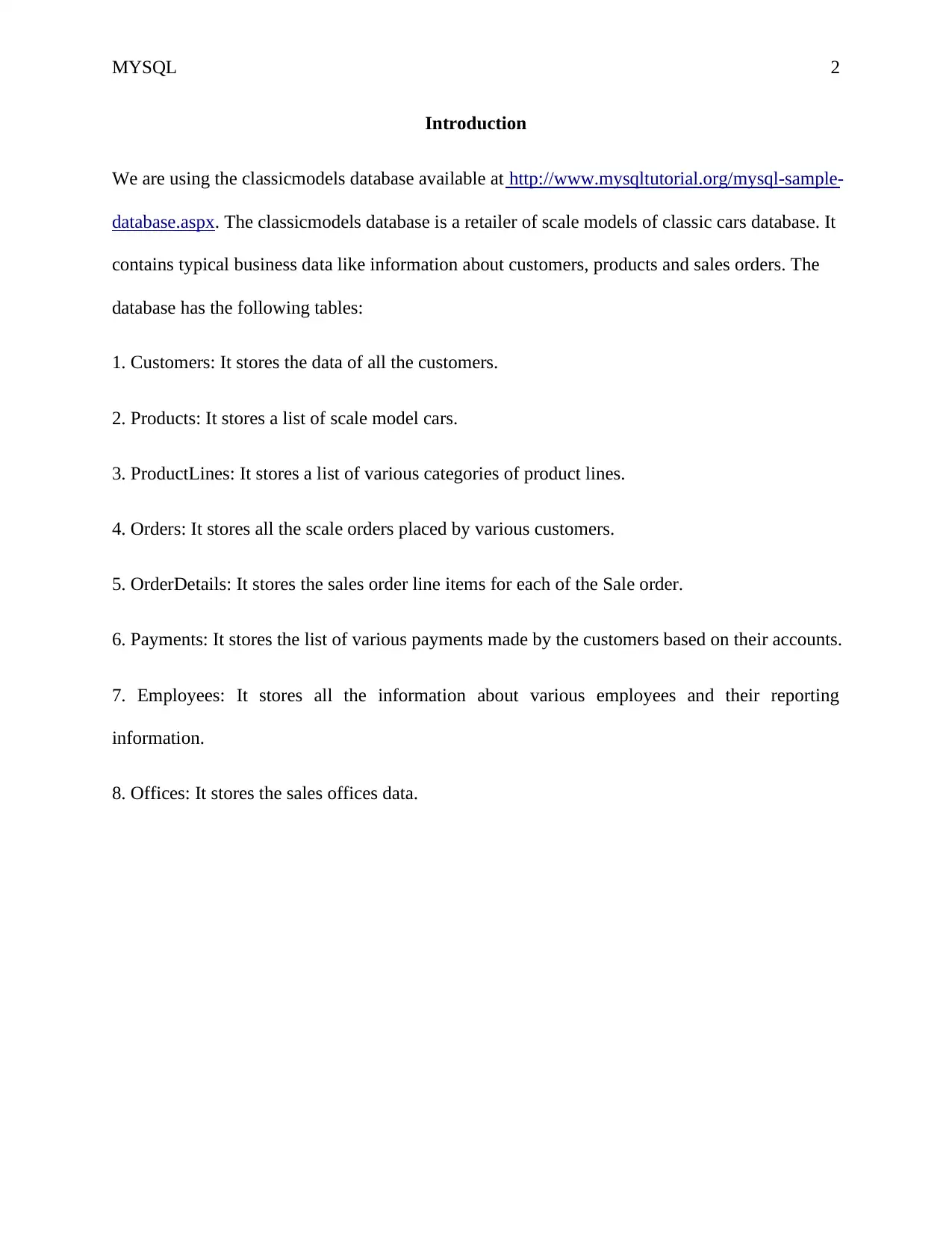
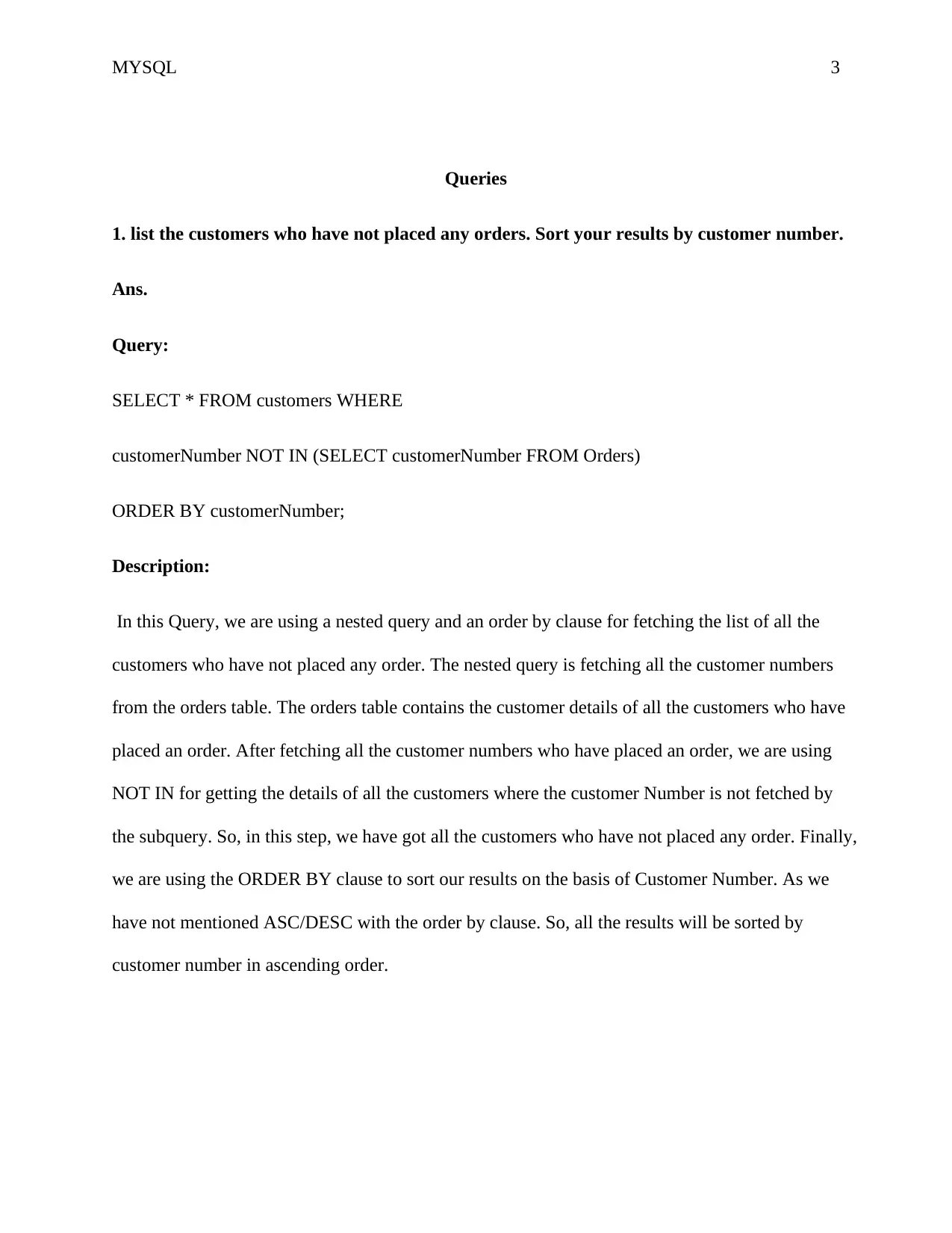


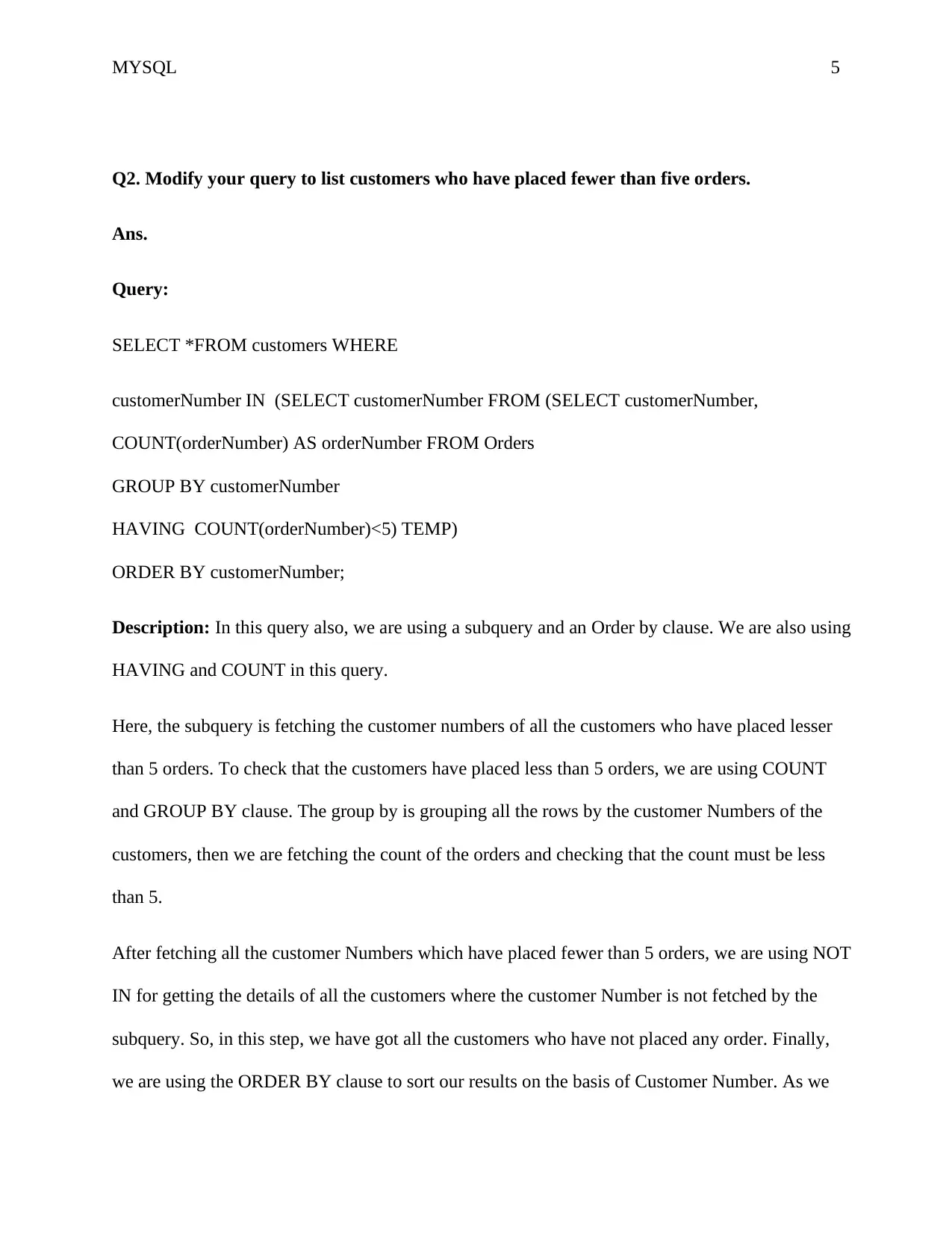
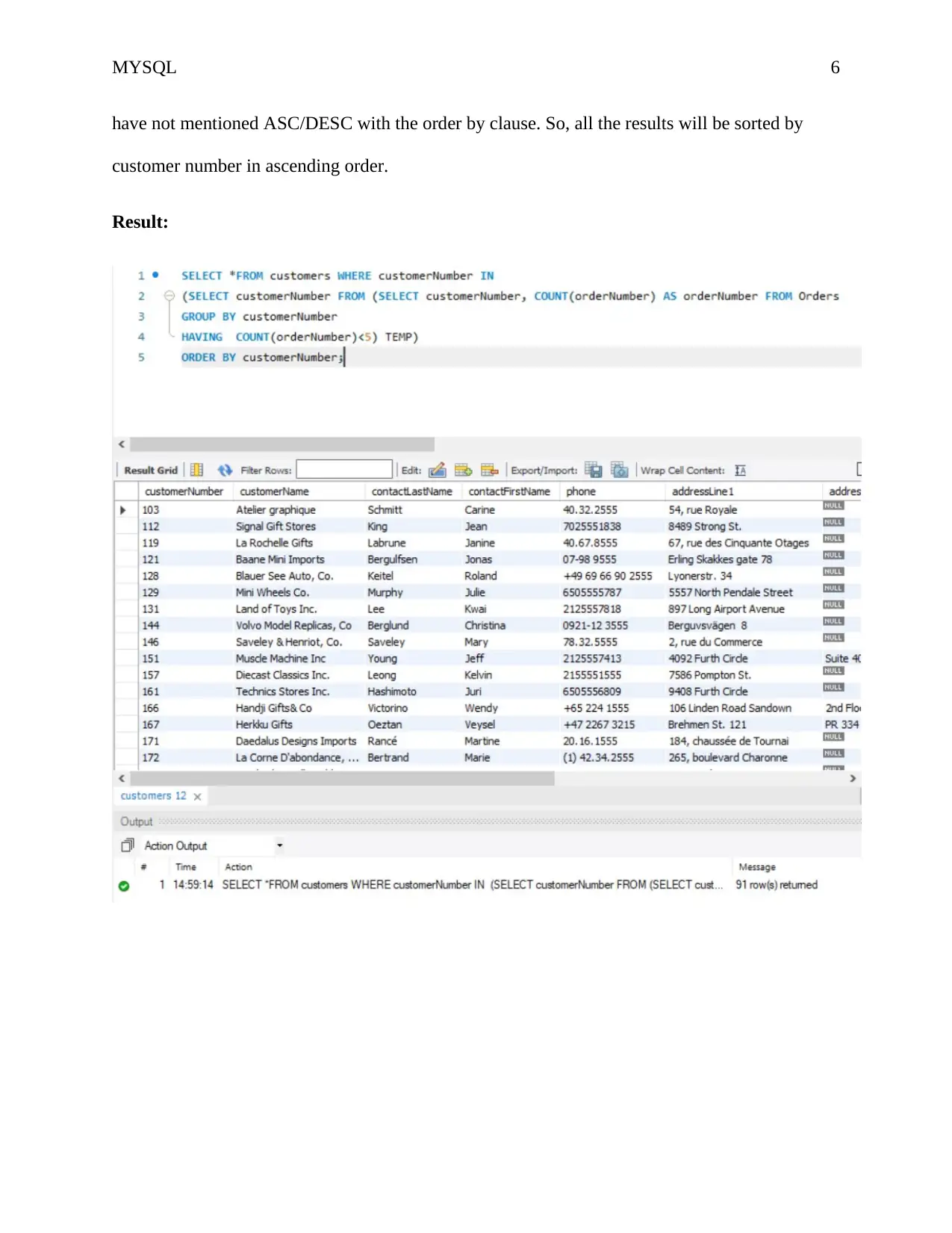
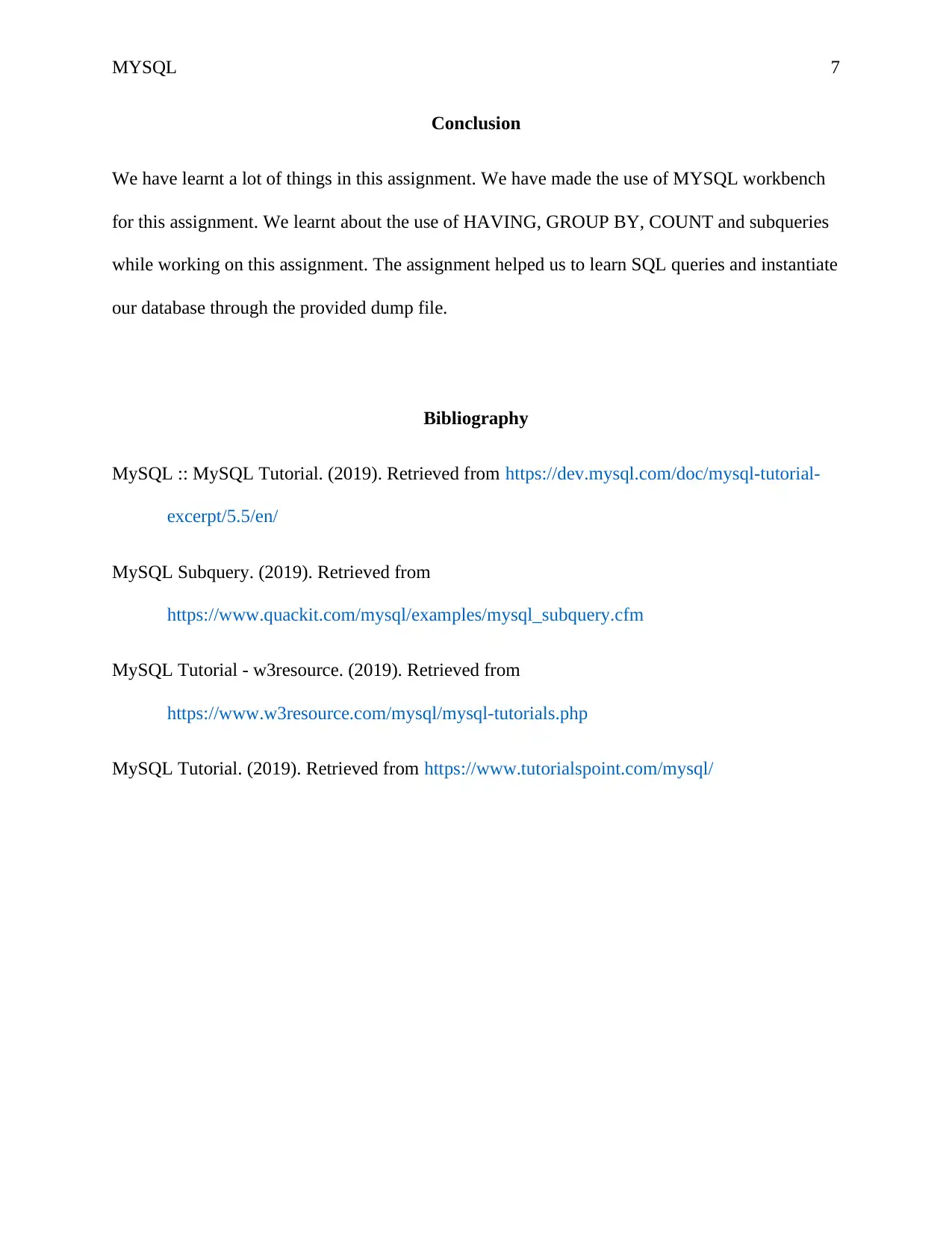






![[object Object]](/_next/static/media/star-bottom.7253800d.svg)